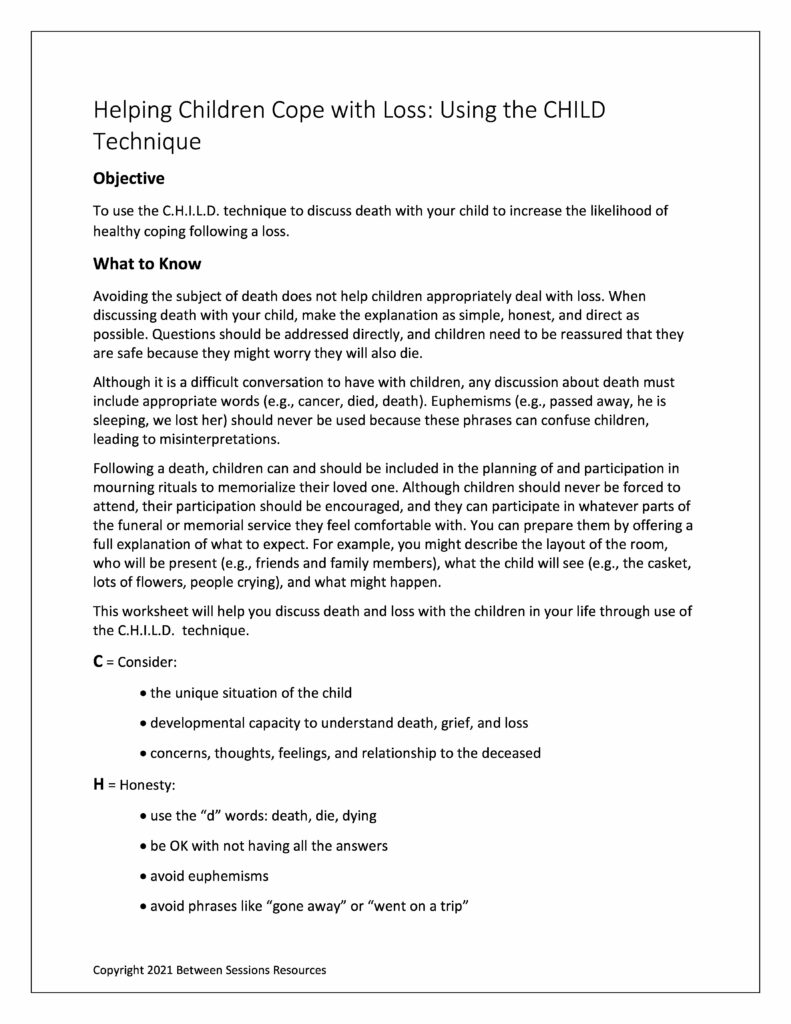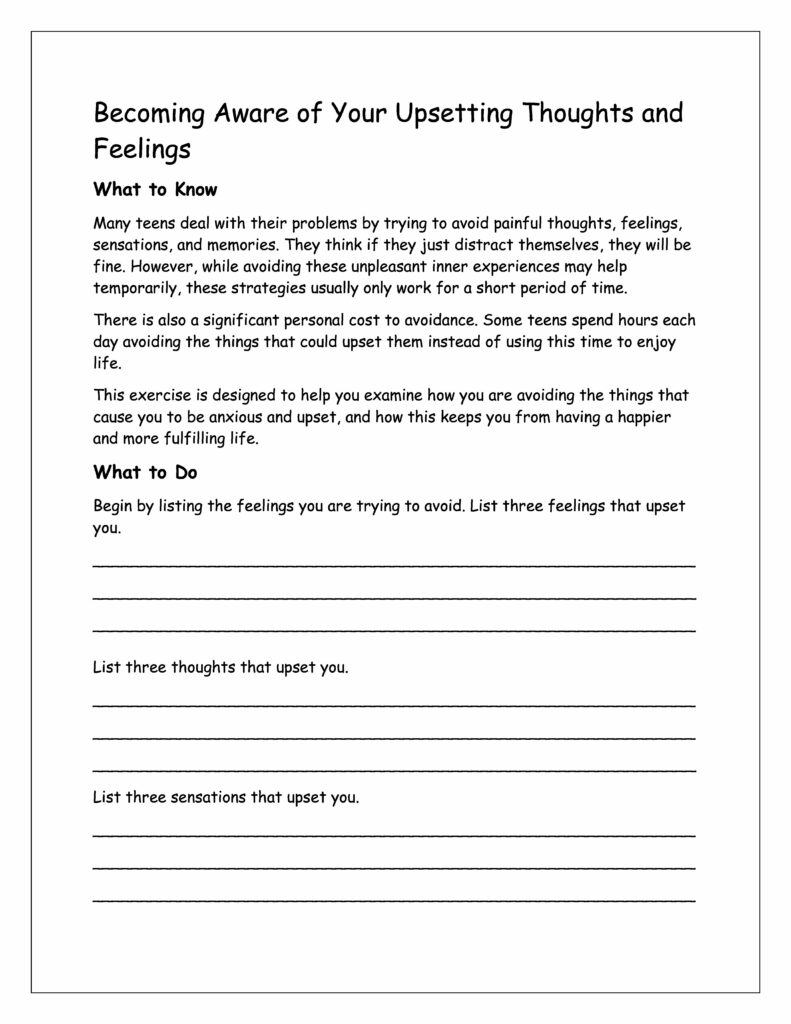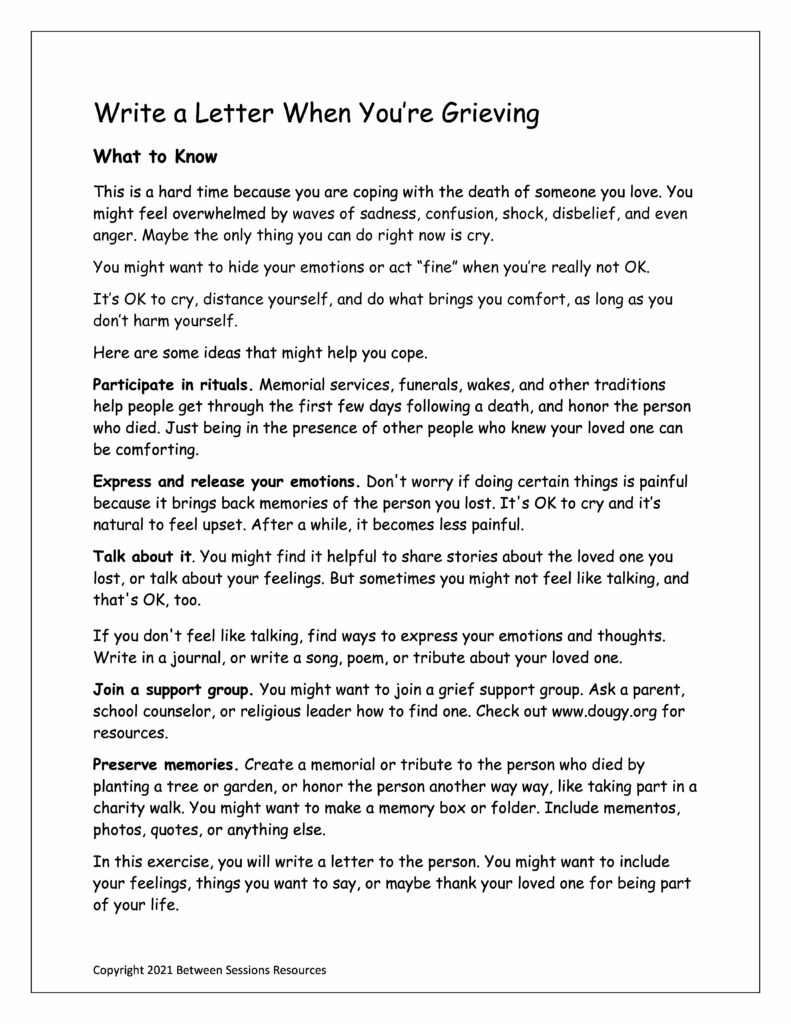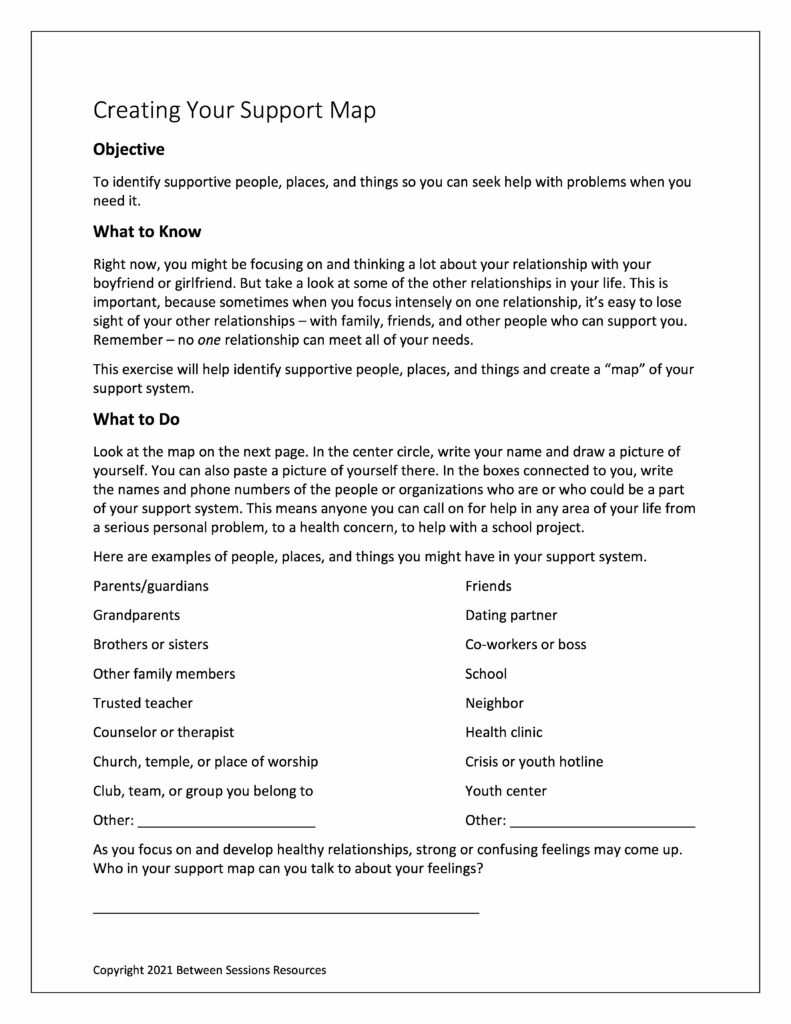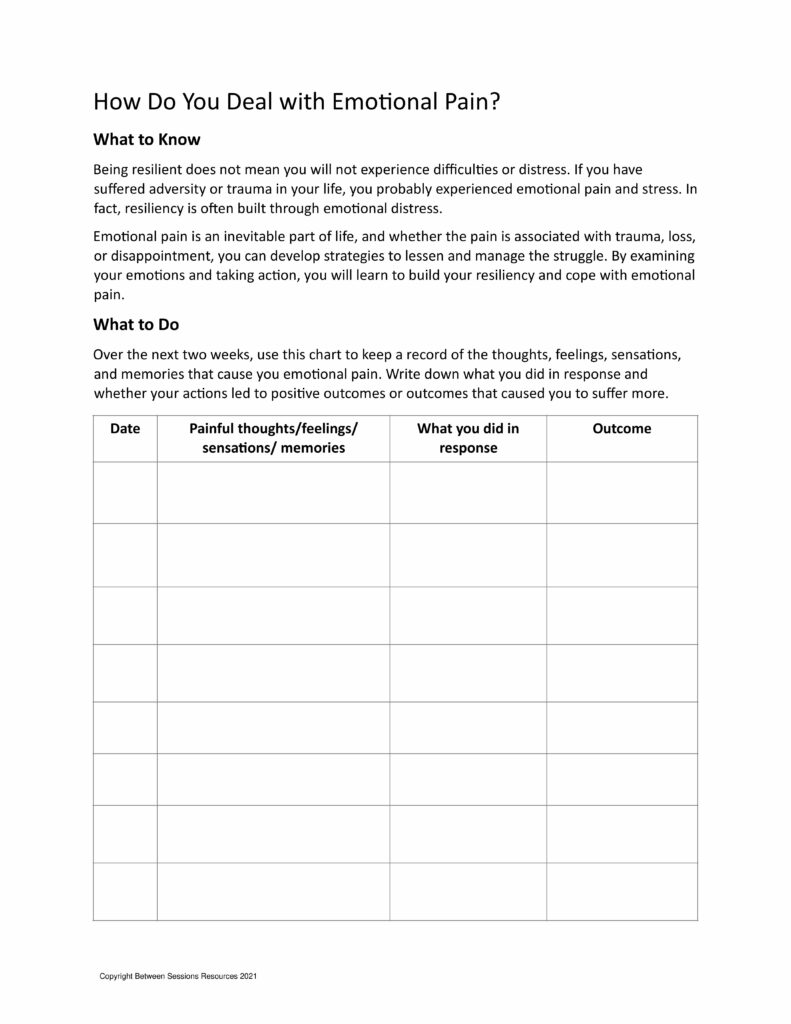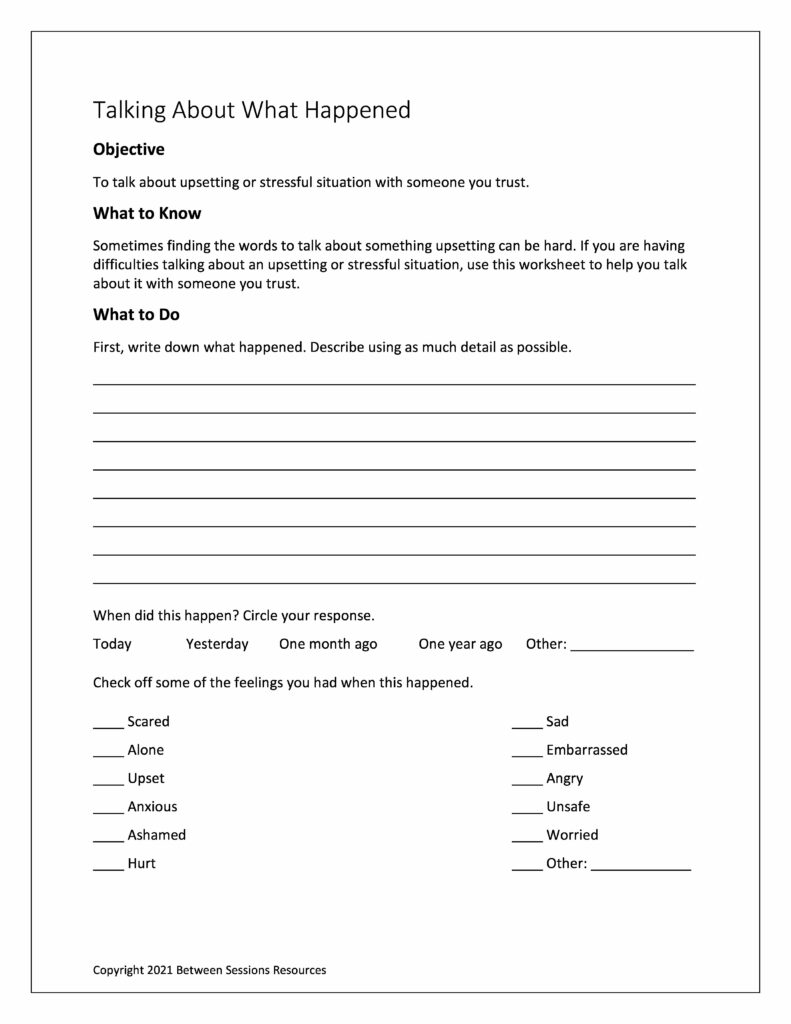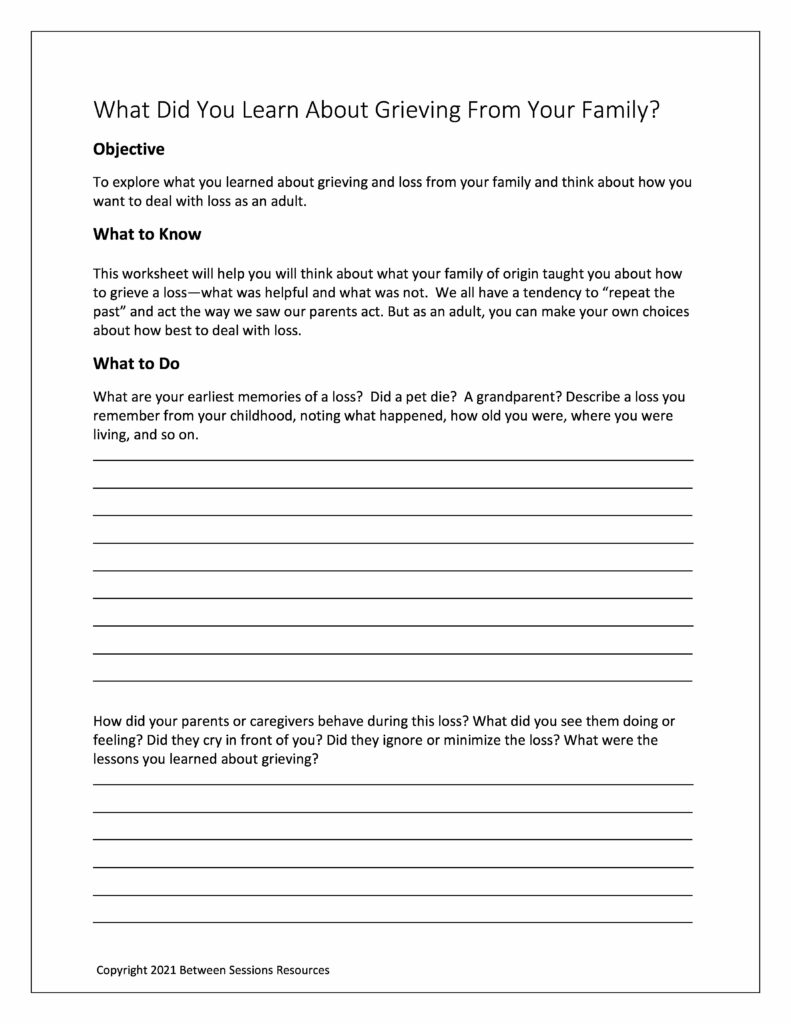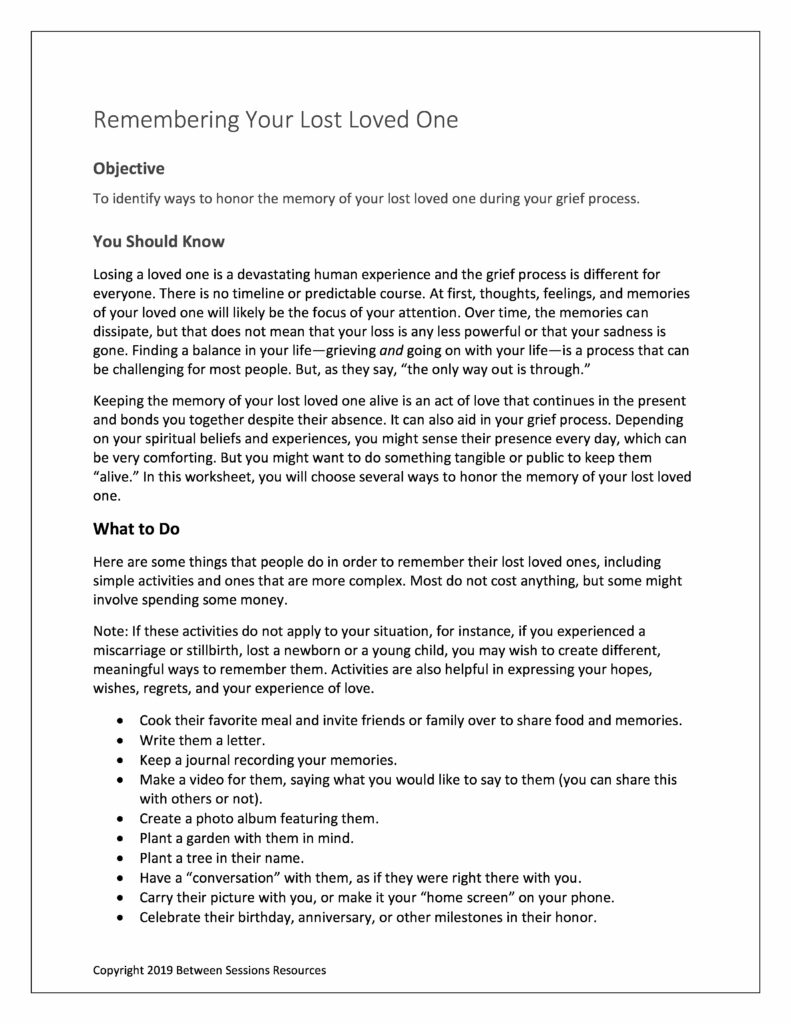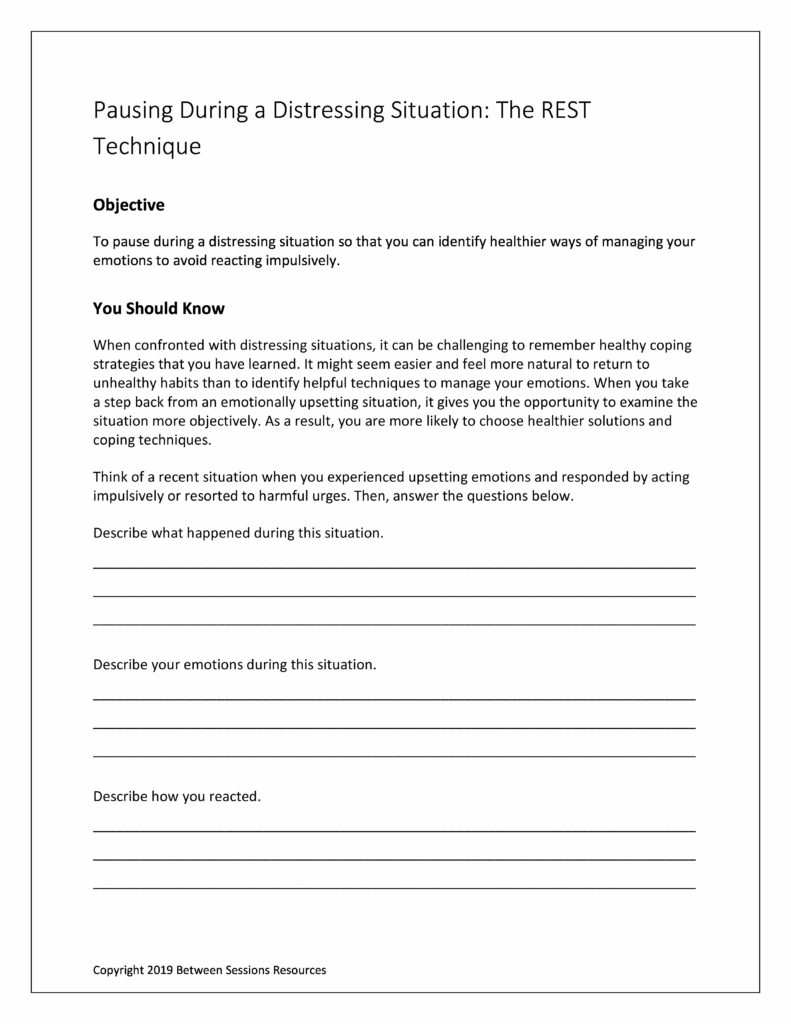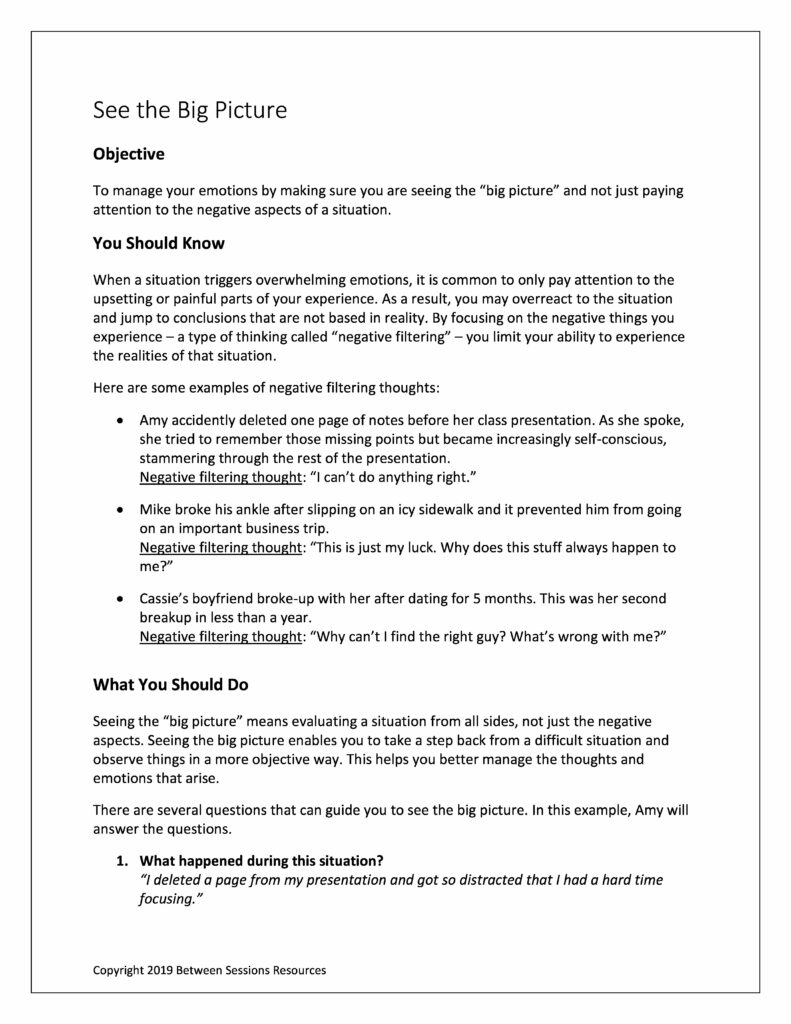This worksheet encourages adults to follow the CHILD technique to help children who have experienced a loss. The acronym stands for: Consider, Honesty, Involve, Listen, and Do It Again.
This worksheet helps people examine their upsetting thoughts and feelings rather than trying to avoid them. (0621, anxiety, worry, avoidance, simple solutions)
This worksheet is designed to help people find new ways to express their feelings and cope with their grief. (0521. grief, loss, mourning, simple solutions)
This activity helps teens understand how the people around them can give them support for different kinds of problems. (0421, relationships, loneliness, depression, anxiety)
This worksheet is designed to help people build resiliency by understanding how they react to emotional pain. (0421, resiliency, awareness, self-perception)
This worksheet can help people organize their thoughts when talking about an upsetting situation or event. (0321, abuse, self-disclosure)
This worksheet asks people to think about losses they experienced when they were children and evaluate the lessons they learned from their family. The worksheet emphasizes that as adults people have choices about how they deal with loss and should try to do this that are most helpful to the grieving process. (0221, grief, grieving, loss, death, mourning)
This worksheet is designed to help people dealing with a loss find positive ways to remember the people they lost. (grief, mourning, 0120)
This worksheet helps people deal with overwhelming emotions by using the REST technique (relax, evaluate, set an intention, take action). It is designed to help people regain control over their emotions. (DBT, emotional regulation, 1119)
This worksheet is designed to help people regulate emotions by seeing the big picture rather than on just focusing on the negative aspects of a situation. The exercise is designed to help people evaluate problems accurately and objectively. (DBT, emotional regulation, 1019)

